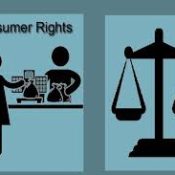
“Shielding the Shopper: Empowering Rights Through Consumer Protection Law”
In the vast and dynamic world of commerce, consumers are often at a disadvantage—facing misleading advertisements, defective products, unfair trade practices, or poor services. Consumer Protection Law is the legal armor that ensures fairness, accountability, and justice in buyer-seller relationships.
Understanding Consumer Protection Law
Consumer Protection Law is designed to safeguard the rights of consumers, promote fair trade, and ensure ethical business practices. In India, this is primarily governed by the Consumer Protection Act, 2019, which replaced the earlier 1986 Act to address the challenges of e-commerce, digital transactions, and modern consumer issues.
Key Rights of Consumers Under the Law:
Right to Safety
Protection against hazardous goods and services that may pose a risk to life or health.
Right to be Informed
Complete knowledge about the product—its price, ingredients, quality, and terms of use.
Right to Choose
Access to a variety of goods and services at competitive prices.
Right to be Heard
Assurance that consumer grievances will be considered and addressed.
Right to Seek Redressal
Legal remedy in case of exploitation, fraud, or poor service.
Right to Consumer Education
Awareness about rights and responsibilities to make informed decisions.
Highlights of the Consumer Protection Act, 2019:
Central Consumer Protection Authority (CCPA): A regulatory body to oversee, investigate, and penalize unfair trade practices.
E-commerce Accountability: Online platforms are now legally accountable for false ads, fake reviews, and poor service.
Simplified Complaint Process: Consumers can file complaints from anywhere, including via online portals like the E-Daakhil system.
Product Liability Provisions: Enables consumers to claim compensation from manufacturers or sellers of defective products.
Alternative Dispute Resolution (ADR): Encourages mediation for faster resolution without lengthy litigation.
Filing a Complaint: Step-by-Step
Collect Evidence – Keep bills, product photos, warranty cards, and communication.
Approach the Seller/Service Provider – Attempt direct resolution.
File a Complaint – If unresolved, lodge a complaint online or at the nearest consumer forum (District, State, or National level).
Seek Compensation – Claim refund, replacement, or damages as applicable.
Conclusion:
Consumer Protection Law isn’t just a statute—it’s a safety net for every citizen who makes a purchase. Whether it’s a faulty gadget, a deceptive ad, or a failed service, this law ensures that consumers are not left powerless. Awareness is your first line of defense—know your rights and assert them.
All Categories
Recent Posts
Consumer Protection Law: Safeguarding Consumer Rights
Tags





